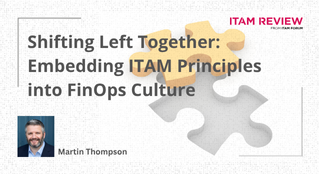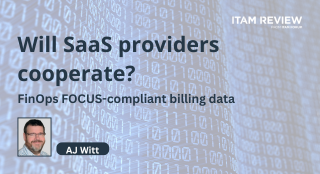Digital Employee Experience (DEX): What it is and why you should care
(This article is by Ryan Stefani, Chief Product Officer, LISA.)
I know, I know—I’ve recently written quite a bit about Magic Quadrants. But it would be a huge oversight not to mention the inaugural Digital Employee Experience (DEX) Magic Quadrant, released on August 26th.
This is a prime opportunity for us to contextualise this research and educate the ITAM community. Many of us in ITAM stay laser-focused on finding SAM and ITAM tools. But, there’s a wide array of technology management tools that overlap with the ones we typically consider based on their names and definitions. This overlap often leads to internal strife and challenges.
To help mitigate these challenges, I believe it’s crucial that we introduce Digital Employee Experience (DEX) to the ITAM community.
What is Digital Employee Experience (DEX)
I’ve provided below the Gartner Market Definition and benefits of DEX. As you will notice, we’ve highlighted a few key mentions of what we would traditionally consider as references to ITAM and/or overlaps with ITAM.
Gartner Definition: Digital employee experience (DEX) management tools measure and continuously improve the performance of and employee sentiment toward company-provided technology. Near-real-time processing of aggregated data from endpoints, applications, employee sentiment and organizational context surfaces actionable insights and drives self-healing automations, optimized support and employee engagement. Insights and self-healing can enhance employee interactions with self-service portals and chatbots. They also help IT support, asset management, procurement and other teams whose work depends on reliable information.
DEX tools help IT leaders improve the digital employee experience and empower IT workers to shift focus from technology management to more business-value-added work.
Benefits include:
- Fewer IT issues that disrupt and impede employee productivity
- Reduced IT overhead through automation
- Improved IT support with faster incident resolution and improved problem management
- Improved endpoint configuration and patch compliance
- Better balance of objective and subjective success measures, including technology adoption, performance and employee sentiment
- Increased workforce engagement and digital dexterity
- IT is becoming more proactive and human-centric
- Increased ability to attract and retain talent
The Gartner report then goes on to call out common use cases for DEX tools. They name the following use case second on their list, “Removing unused licensed software to reduce costs. Providing basic software asset management (SAM) functionality for those without a SAM tool.”
Hopefully, these highlights have caught your attention regarding some of the crossovers.
A shift for ITAM
I first encountered DEX several years ago when traditional ITAM vendors like 1E, Scalable Software, and even Ivanti, began to pivot. This shift intrigued me then and continues to do so now. These vendors started to move beyond the traditional focus on ITAM. They turned their attention to managing technology with the end-users and the business in mind. This approach and shift in mindset is what I’ve always envisioned for ITAM. What excites me most about the potential of ITAM is finding ways to improve the employee experience, reduce disruptions, and ultimately, enhance the value of technology for users, and mitigate risks, not just optimise surface-level costs.
Historically, the challenge has been the ability to collect and analyse all IT and business data to make informed decisions, and then, recognise patterns to ultimately make faster and, ideally, automated decisions to improve the technology experience. Now, with the advent of cloud services, machine learning, AI, and other advancements, this challenge is becoming more surmountable
What this mean for ITAM
Some might see it as a threat, but I don’t. I see it as a call to action and a reason to be excited about the future of ITAM.
This research, along with other relevant studies, addresses “digital workplace leaders.” This term that may sound vague or even fictitious to some. This doesn’t appear to be real role that I’ve encountered. Instead, I believe it’s a natural fit for the asset manager. Asset Managers shouldn’t be focused on managing lifecycles of hardware based solely on financial plans or maintaining license compliance. Our role should be about collecting and organising data to coordinate the enhanced management of all organisational technology, ultimately driving business value.
This is another signal for asset managers to make a dramatic pivot from the traditional view of asset management. Given that several “legacy” ITAM vendors are included in this Magic Quadrant, it’s likely they’ve tried to sell the concepts of DEX and have started repositioning their offerings to gain traction in other areas of the organisation.
Consider this a critical call to action to learn more about DEX technology and the concepts that DEX enables. This should help to shift the traditional perception of ITAM to taking control of digital workplaces and their technology.
We’d love to hear from Asset Managers who are already on this path! We’re starting to see movement in the SaaS space, particularly with the emergence of SaaS Management Platforms (SMPs) and the push to streamline SaaS delivery. However, I believe an even bigger trend may be on the horizon.
Can’t find what you’re looking for?
More from ITAM News & Analysis
-
Broadcom vs Siemens AG - A Brewing Storm
The ongoing legal battle between VMware (under Broadcom ownership) and Siemens is yet another example of why ITAM goes far beyond license compliance and SAM. What might, at first glance, appear to be a licensing dispute, ... -
Shifting Left Together: Embedding ITAM into FinOps Culture
During one of the keynotes at the FinOps X conference in San Diego, JR Storment, Executive Director of the FinOps Foundation, interviewed a senior executive from Salesforce. They discussed the idea of combining the roles of ... -
Addressing the SaaS Data Gap in FinOps FOCUS 2.1
I recently reported on the FinOps Foundation’s inclusion of SaaS and Datacenter in its expanded Cloud+ scope. At that time, I highlighted concerns about getting the myriad SaaS companies to supply FOCUS-compliant billing data. A couple ...
Podcast
ITAM training
Similar Posts
-
Broadcom vs Siemens AG - A Brewing Storm
The ongoing legal battle between VMware (under Broadcom ownership) and Siemens is yet another example of why ITAM goes far beyond license compliance and SAM. What might, at first glance, appear to be a licensing dispute, ... -
Shifting Left Together: Embedding ITAM into FinOps Culture
During one of the keynotes at the FinOps X conference in San Diego, JR Storment, Executive Director of the FinOps Foundation, interviewed a senior executive from Salesforce. They discussed the idea of combining the roles of ... -
Addressing the SaaS Data Gap in FinOps FOCUS 2.1
I recently reported on the FinOps Foundation’s inclusion of SaaS and Datacenter in its expanded Cloud+ scope. At that time, I highlighted concerns about getting the myriad SaaS companies to supply FOCUS-compliant billing data. A couple ... -
The Future of ITAM
As an ITAM Industry Analyst, I’m often asked what ITAM’s future looks like. This can be a tough question to answer because when it comes to the future, there are endless possibilities. Often, it seems, some ...




